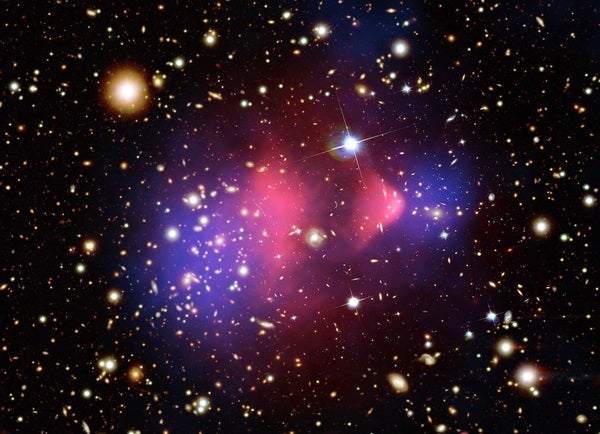Neutrinos as physicists understand them cannot constitute dark matter. The Standard Model explains how the basic building blocks — fundamental particles — and three of the four known forces created the universe. Fundamental particles are subatomic particles that do not consist of any other particle; electrons are an example, and so are neutrinos.
What rules neutrinos out of the running for dark matter is that in the Standard Model, they are considered “hot” particles, meaning they travel at speeds close to the speed of light. For a particle to constitute dark matter, it must be “cold,” or travel slowly compared to light.
The major role dark matter played in the formation of the universe was to clump itself up into large masses, whose gravity then attracted regular matter, forming the large-scale structures of the universe. If dark matter were hot, the particles would have been moving too fast to create these clumps, meaning there would be no galaxies (at least, not on the scales we observe them). We still observe these dark matter clumps, or dark matter halos, surrounding galaxies.
Another aspect of neutrinos that rules them out as dark matter candidates is that they aren’t actually invisible — at least, not in the way that physicists define it. When a scientist refers to an invisible particle, it usually means a collision with another particle has never been observed. But researchers have seen neutrinos interact with other particles through the weak force.
Hopefully dark matter isn’t fully invisible; otherwise we could never detect it directly by “seeing” it. And because dark matter has been confirmed to interact gravitationally, astronomers and particle physicists are hopeful that it has some highly suppressed interactions yet to be seen.










